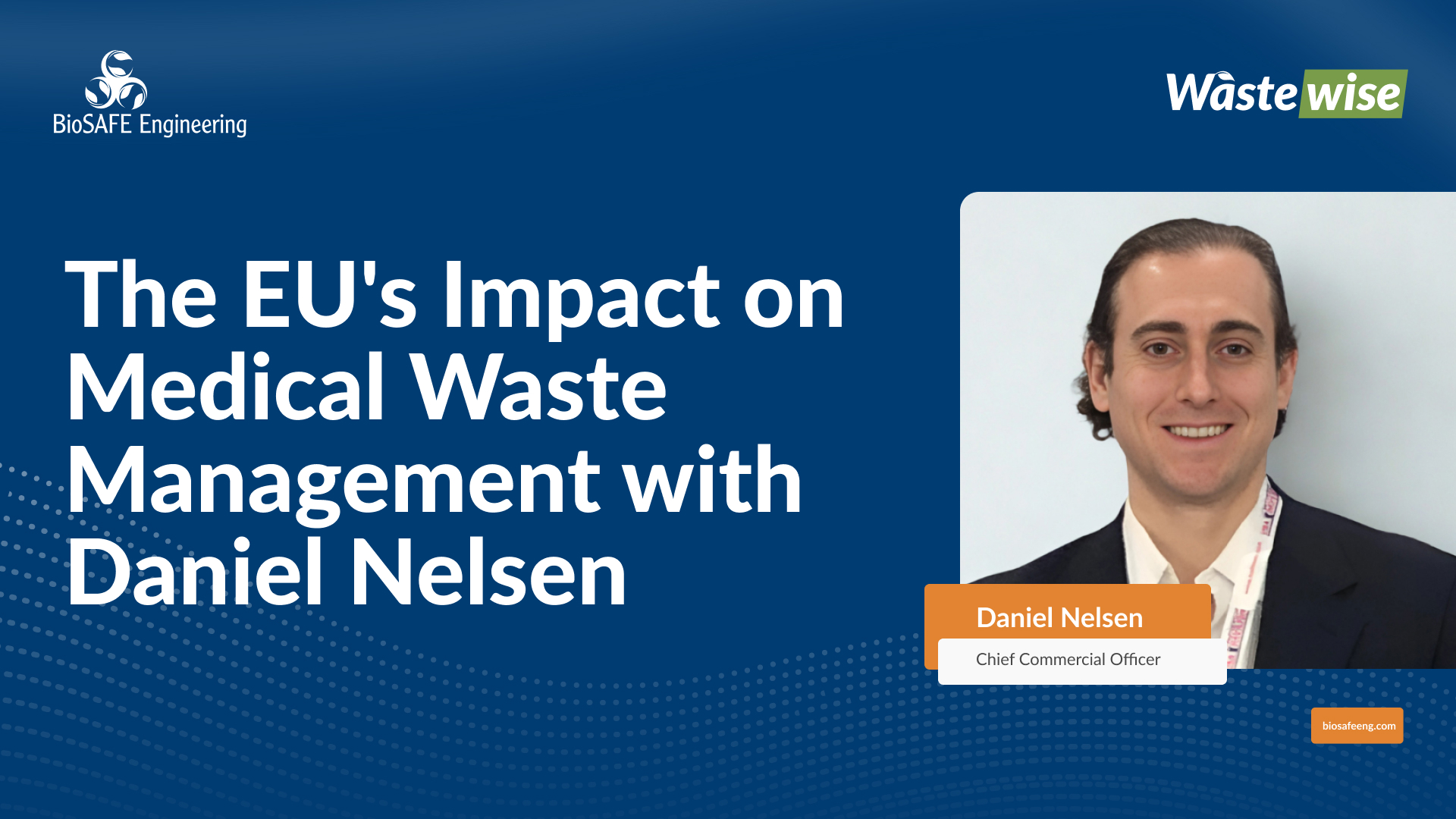 Episode Summary
Episode Summary
In this episode of Wastewise, Daniel Nelsen, Chief Commercial Officer at BioSAFE, discusses the evolving landscape of healthcare waste management. He explores the shift towards cleaner methods with a lower environmental impact, driven by public concern and stricter regulations, particularly in the EU. Daniel highlights how these changes impact waste management practices worldwide.
Daniel also examines the economic pressures influencing the industry. The rising value of recycled plastic creates incentives for healthcare facilities and waste management companies to find profitable recycling solutions. He emphasizes the importance of corporate accountability and tracking waste streams to identify opportunities for improvement and cost savings.
Finally, Daniel offers practical advice for optimizing waste management processes. He discusses the importance of understanding current practices, identifying opportunities, and collaborating with stakeholders to implement effective changes. He uses Takeda, a large blood plasma company, as an example of how efficient waste management can transform a cost center into a profit center.

BioSAFE Engineering
Daniel A. Nelsen
Chief Commercial Officer
Key Insights
EU Regulations Drive Global Change
Corporate Accountability and Transparency
Economic Incentives for Sustainable Waste
Incremental Approach to Optimization
Episode Highlights
The Impact of Single-Use Plastics in Healthcare
Daniel discusses the increased use of single-use plastic devices in healthcare, driven by patient safety and sterility. While beneficial for public health, this shift has led to a substantial increase in waste, prompting a critical need for better waste management solutions. The EU is leading the charge with regulations mandating recycled or reused plastic in single-use applications. This has created a ripple effect, impacting both the supply and demand for recycled plastic materials, pushing for positive change.
“One of the drawbacks with that transition, which has been absolutely fantastic for public health outcomes, has been the increase in the amount of waste being generated and raising the question of what to do with that waste.”
Shifting from Prescriptive Regulation to Economic Incentives
Rather than outright bans, Daniel notes a trend towards using economic incentives to encourage better waste management practices. Adding costs to less sustainable methods like incineration, coupled with the rising value of recycled materials, makes alternative solutions more appealing financially. This market-driven approach promotes innovation and adoption of more sustainable practices.
“One thing we’ve been seeing was rather than that being pushed from a prescriptive, ‘we are banning incineration’ direction, it was being phased out by layering on additional cost. Yes, you can incinerate, but you have to install scrubbers that meet these requirements.”
Varying Global Pressures on Waste Management
Daniel highlights the different factors influencing waste management practices across regions. While regulations are a significant driver in the EU and increasingly in the US, other areas like Africa face challenges related to energy availability and limited landfill space. This necessitates different approaches to waste disposal and recycling, emphasizing the need for solutions tailored to specific regional constraints.
“So we’re seeing kind of different pressures in different regions. In Africa, for instance, while there is some of those regulatory pieces kind of driving change there, it’s more so pressures around energy availability and landfill space availability, pushing for alternate disposable options.”
Collaboration for Sustainable Change in Healthcare
Daniel emphasizes the importance of collaboration among stakeholders to drive meaningful change in healthcare waste management. Hospitals often have limited agency in choosing materials due to regulations and testing requirements. Effective change often requires partnerships between device manufacturers, purchasing groups, hospital associations, and other stakeholders to create aligned incentives and facilitate the adoption of more sustainable practices.
“What we’re seeing is in cases where that’s successful, it’s usually a case of industry or private-public partnership or participation, where the group is moving together to affect that change. It’s not kind of a single unilateral decision being pushed up or down.”





